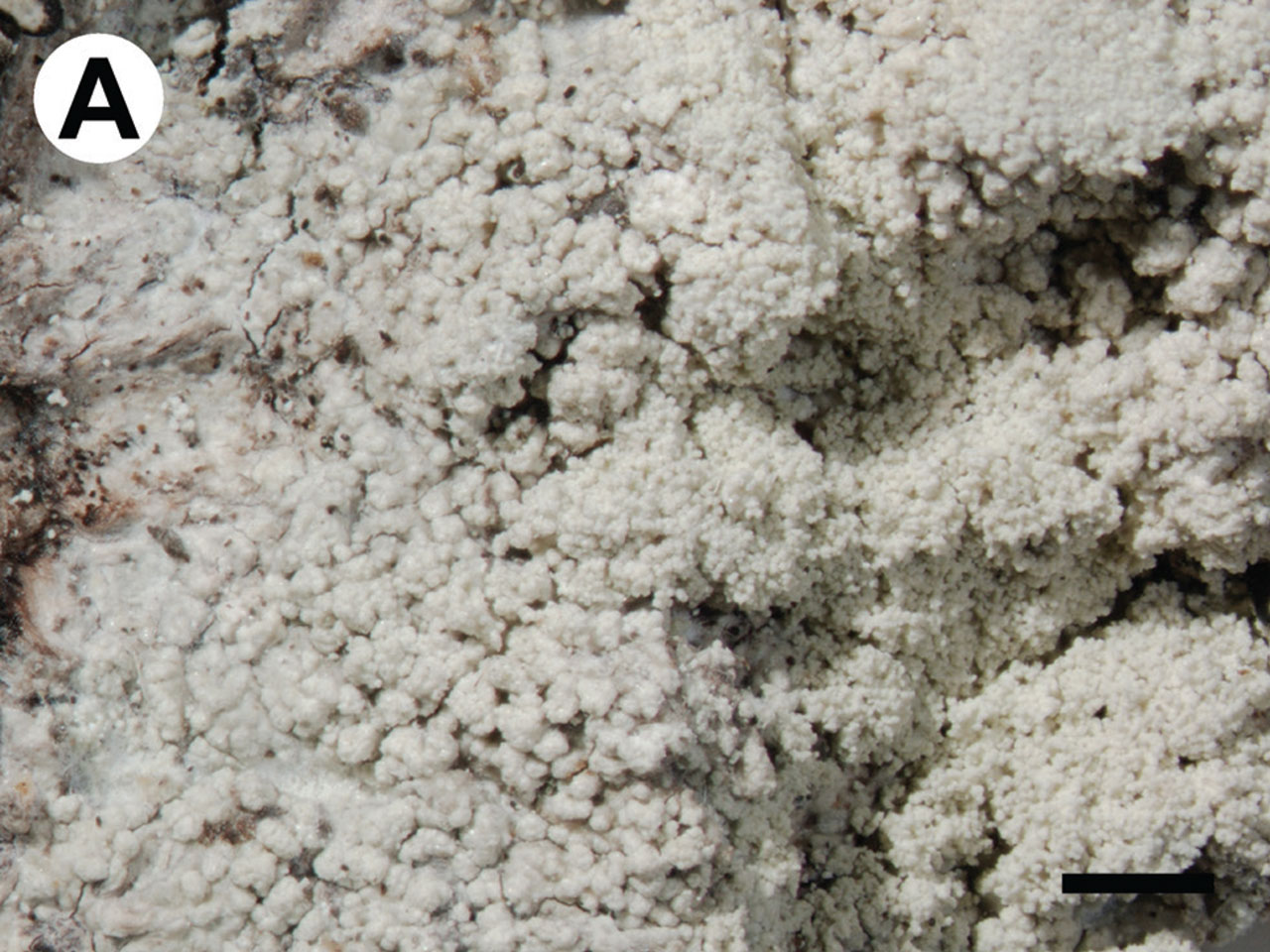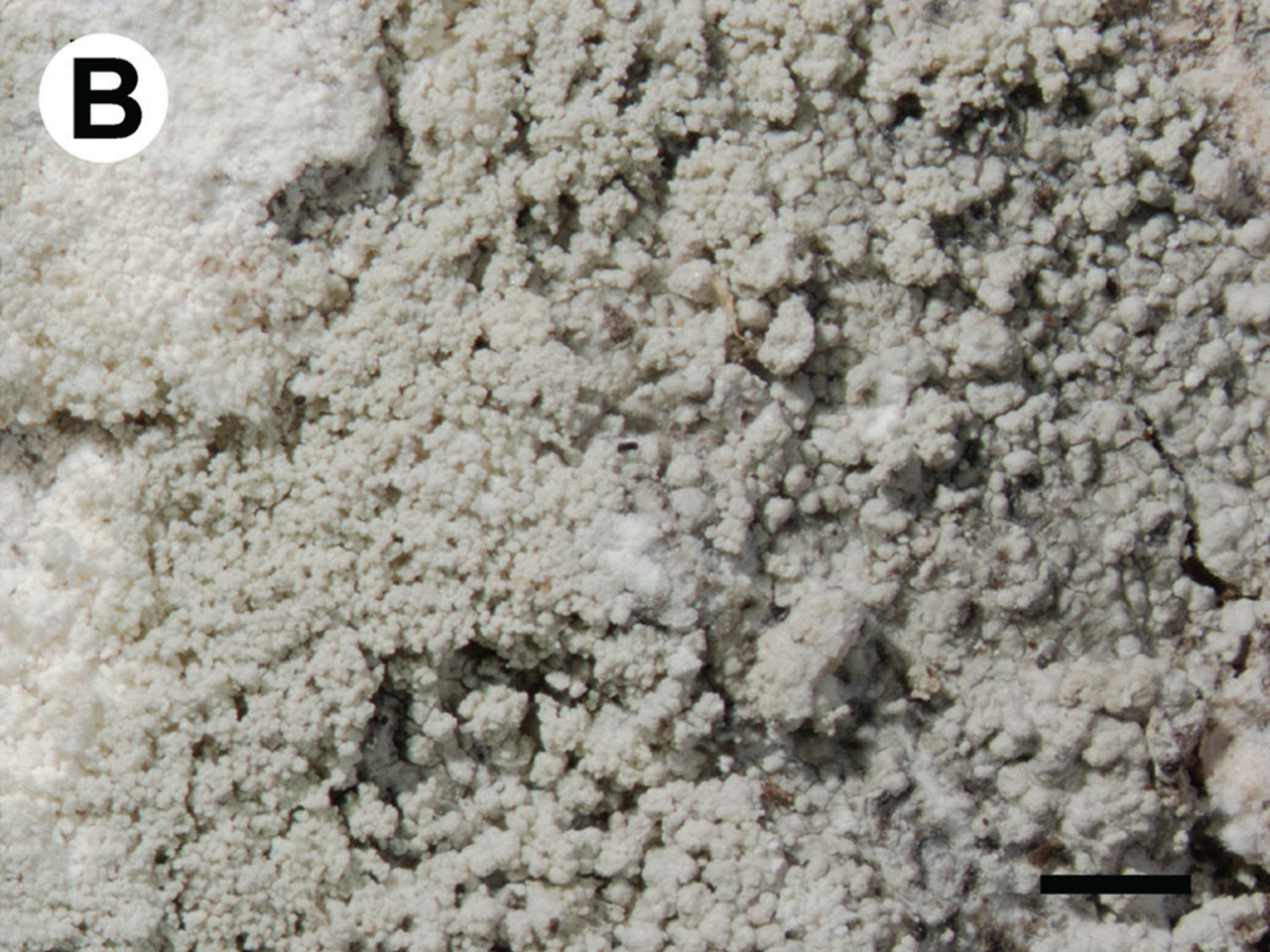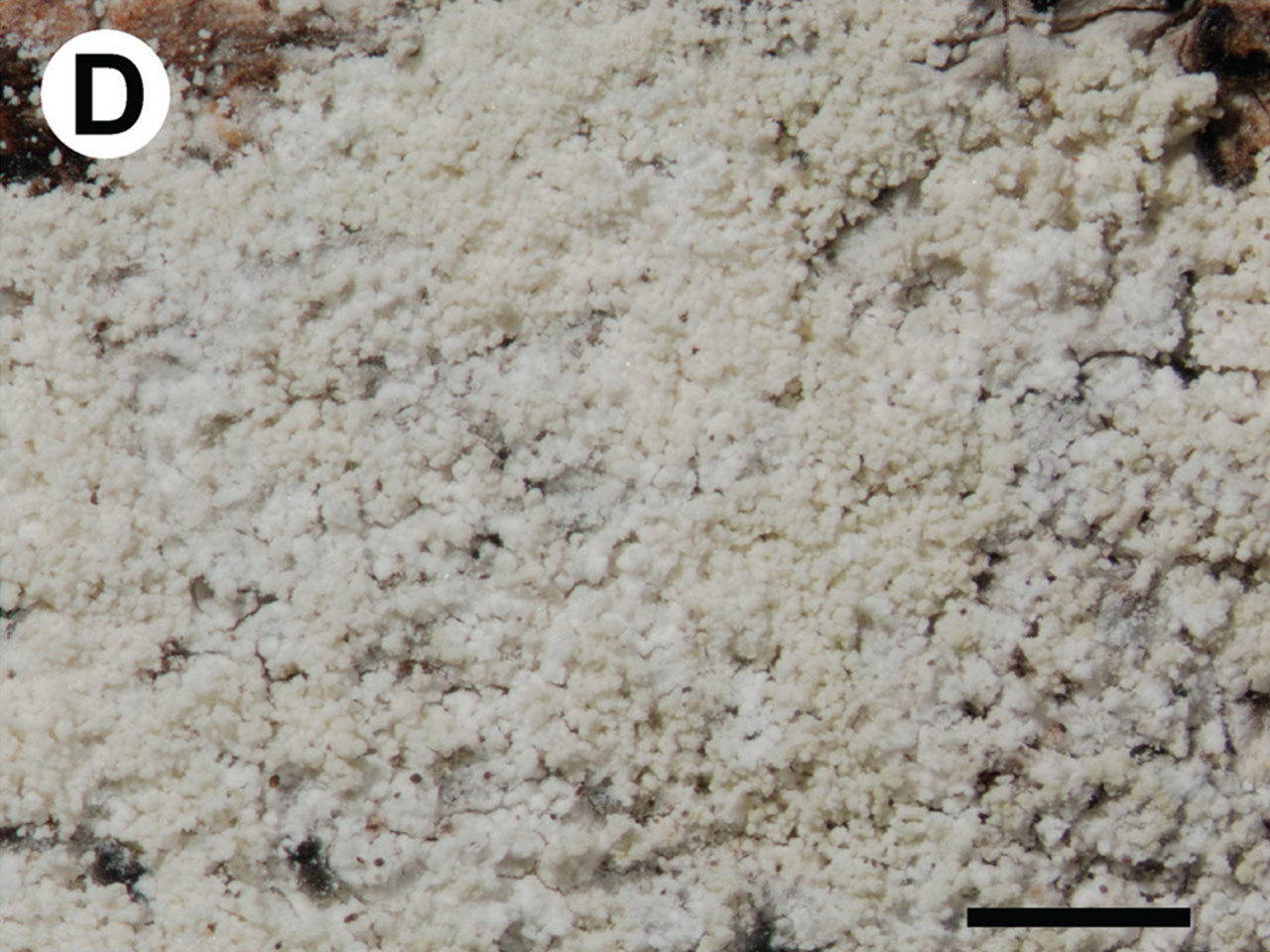Loxospora elatina s. str.
Loxospora elatina s. lat. was a well known and widespread and usually sterile soridate crust of acid bark and damp lignum in humid old woods. However, this was split into two species by Ptach-Styn et al (2024), Loxospora elatina s. str. and Loxospora chloropolia. The latter appears to be overwhelmingly the most abundant of the two species in Britain and Ireland and L. elatina s. str. may be very rare. The K+ immediately bright yellow, soft soralia distinguishes L. elatina from similar species (apart from L. chloropolia), e.g. Biatora chrysantha, Lecanora alboflavida, Ochrolechia microstictoides, Mycoblastus caesius, Mycobilimbia epixanthoides and Varicellaria hemisphaerica.
Thallus crustose, effuse, grey, matt, thin (at the margin) or more usually thick, continuous or cracked, slightly folded at least at the margins; areoles usually strongly convex, tuberculate and constricted at the base or re-sembling coarse isidia, sometimes pustulate, dispersed or aggregated; prothallus often distinct, white, felted; soralia whitish to greenish-grey, usually convex, irregularly rounded, bursting from the top of areoles, often fused and tending to coalesce locally on the thallus or covering most parts of the thallus; soredia to 60 μm diam., often in consoredia to 120 μm diam. Apothecia rare, 0.4–1.5 mm diam.; thalline margin present in young apothecia, smooth to flexuose, verrucose or dentate, sometimes with small soralia, later excluded; exciple thin, flesh-coloured to pale grey, orange-brown in section, smooth or more often flexuous, to 100 μm thick; disc reddish-brown, thinly white-pruinose; hymenium to 125 μm high; epithecium straw-brown (K+ pale reddish-brown), with dense granules dissolving in K. Paraphyses not capitate, sometimes anastomosing. Asci 8-spored, with a uniformly KI+ blue apical dome. Ascospores 0–5-septate, helically coiled in asci, colourless, fusiform with acuminate apices, curved, 35–53 (–64) × 4.5–6.5 (–7) μm. Pycnidia not known. Chemistry: thamnolic acid (major), elatinic acid (minor, trace or absent) and squamatic acid (trace or absent). Cortex, apothecial section, soralia and medulla K+ bright lemon-yellow, Pd+ yellow to orange, UV–
Candidate thalli can be distinguished from Loxospora chloropolia by the presence of tubercles and the rapidly coalesing soralia. Thallus tubercles are normally lacking in L. chloropolia, but rare anomalous specimens can have these as well. In the latter case the soralia on these do not fully coalesce, while those on L. elatina s. str. do fully coalesce at least on part of the thallus, but sequencing is advised to confirm L. elatina s. str. in all cases. Loxospora elatina s. str. is actually more likely to be overlooked as a species with more irregular and diffuse soralia such as Ochrolechia microstictoides, than recorded as Loxospora chloropolia; the look given by the non-coalesing soft soralia of Loxospora chloropolia contrasting with the darker smooth thallus that gives it its distinctive "jiz" is lacking in Loxospora elatina s. str.
To date only confirmed from a single record from S.E. Scotland (East Lothian) on Birch in a ravine woodland. Should be looked for in eastern Scotland but Loxospora chloropolia appears to be the overwhelmingly dominant species in Britain and L. elatina s. str. may be rare.
To date only confirmed from a single record from S.E. Scotland (East Lothian) on Birch in a ravine woodland.

Only known from a single site by 2025 in East Lothian. Should be looked for in elsewhere in eastern Scotland but Loxospora chloropolia appears to be the overwhelmingly dominant species in Britain and L. elatina s. str. may be rare.
Given the single record to date and the lack of other records by 2025, Loxospora elatina s. str. may be rare and potentially threatened so is best regarded as Data Deficient.
Cannon, P., Coppins, B., Aptroot, A., Sanderson, N. & Simkin, J. (2025). Miscellaneous lichens and lichenicolous fungi, including Aphanopsis and Steinia (Aphanopsidaceae), Arthrorhaphis (Arthrorhaphidaceae), Buelliella, Hemigrapha, Melaspileella, Stictographa and Taeniolella(Asterinales, family unassigned), Phylloblastia (Chaetothyriales, family unassigned) Cystocoleus (Cystocoleaceae), Sclerococcum(Dactylosporaceae), Eiglera (Eigleraceae), Epigloea (Epigloeaceae), Euopsis (Harpidiaceae), Lichenothelia (Lichenotheliaceae), Lichinodium(Lichinodiaceae), Melaspilea (Melaspileaceae), Epithamnolia and Mniaecia (Mniaeciaceae), Lichenostigma (Phaeococcomycetaceae), Pycnora (Pycnoraceae), Racodium (Racodiaceae), Chicitaea and Loxospora (Sarrameanaceae), Schaereria (Schaereriaceae), Strangospora (Strangosporaceae), Botryolepraria and Stigmidium(Verrucariales, family unassigned), and Biatoridium, Mycoglaena, Orphniospora, Piccolia, Psammina and Wadeana (order and family unassigned). Revisions of British and Irish Lichens 57: 1–78.
Ptach-Styn, Ł., Guzow-Krzemińska, B., Lendemer, J.C., Tønsberg ,T., Kukwa, M. (2024) Phylogeny of the genus Loxospora s.l. (Sarrameanales, Lecanoromycetes, Ascomycota), with Chicitaea gen. nov. and five new combinations in Chicitaea and Loxospora. MycoKeys 102: 155–181. https://doi.org/10.3897/mycokeys.102.116196
Text by Neil A. Sanderson based on Cannon et al (2025) and Ptach-Styn (2024)



